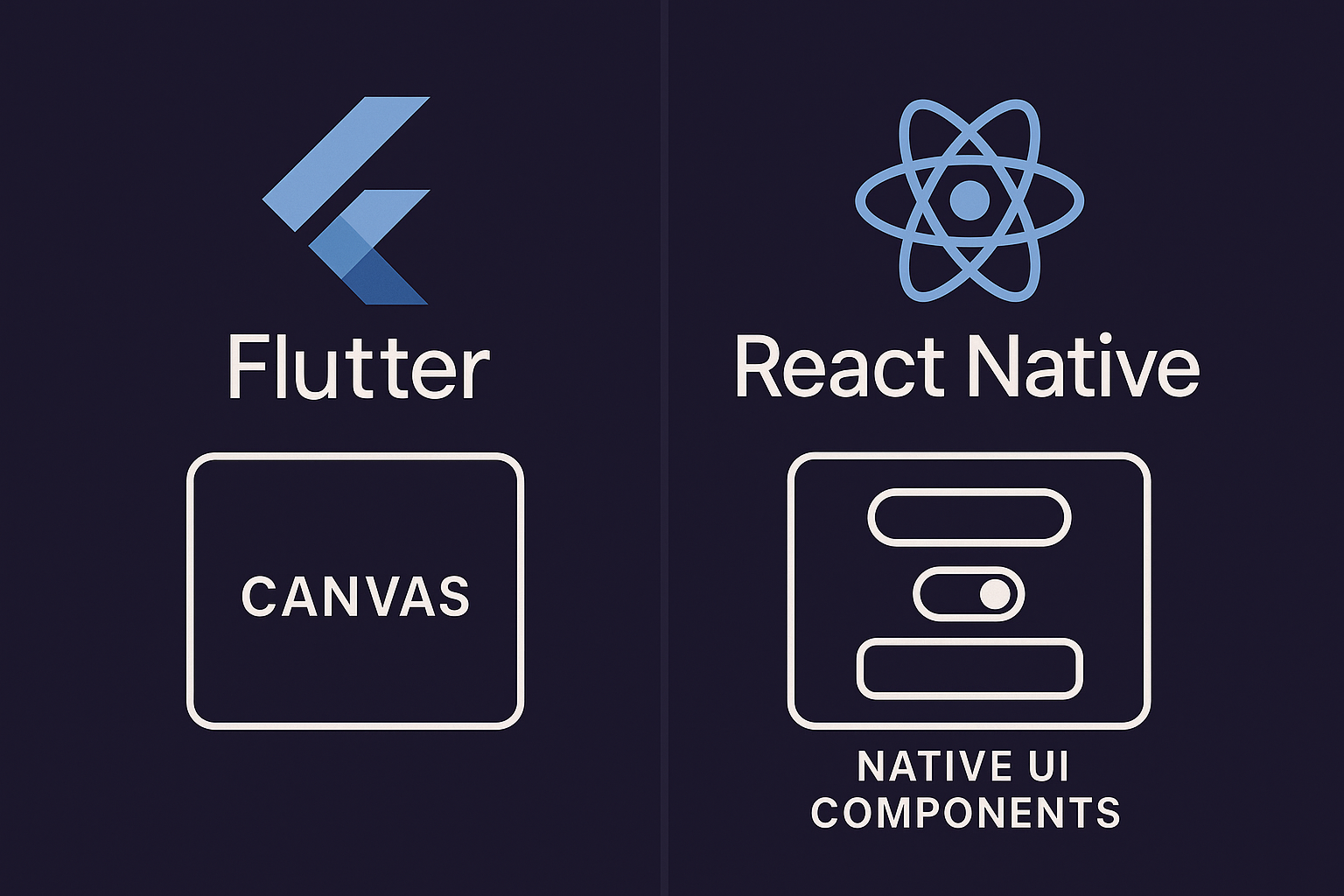From Flutter to React Native: Why Our Team Came Back to Reality

From Flutter to React Native: Why Our Team Came Back to Reality
Flutter paints the whole app. React Native uses the platform’s own tools.
When you pick a cross-platform framework, you’re not just choosing a language, you’re choosing a philosophy. The key question is simple: who owns the UI?
With Flutter, the framework owns it. With React Native, you let the platform do its job.
Flutter: Everything Drawn on Its Own Canvas
Flutter uses its own rendering engine. Every widget, every button, switch, text field, and pixel is drawn from scratch using Skia (and now Impeller). It doesn’t use UIKit, AppKit, or Android’s native components at all. The result is total control and visual consistency across devices, but at a high cost.
When Flutter renders the UI, it bypasses the OS entirely. Instead of saying “draw a native button,” it says “give me a canvas and I’ll draw my own.” This approach allows pixel-perfect designs and cross-platform uniformity but it also means:
-
Accessibility and input behaviors must be reimplemented manually.
-
Platform updates (like iOS visual changes) don’t apply automatically.
-
The app always carries its own rendering engine, increasing size and complexity.
Flutter creates an app world that looks native but isn’t. It’s a sandbox, sealed off from the underlying OS.
React Native: Built On the Platform Itself
React Native takes the opposite path. Instead of redrawing the universe, it bridges JavaScript components to native ones.
A <Text> component maps to UILabel on iOS and TextView on Android. A <Button> becomes a true UIButton or MaterialButton. Scrolling, input, and gestures are handled by the OS not re-coded in a graphics engine.
That means React Native apps:
-
Inherit native accessibility, gestures, and UI behaviors.
-
Automatically reflect OS-level updates and visual changes.
-
Integrate naturally with native modules, SDKs, and system APIs.
React Native doesn’t fight the platform, it extends it. When the OS evolves, your app does too.
Why This Difference Matters
1. Maintenance and Longevity
React Native’s approach scales better with platform evolution. When Apple or Google changes default UI styles or input rules, React Native adapts. Flutter requires manual catch-up.
2. User Experience Consistency
Flutter offers identical UI everywhere but sometimes that’s a problem. Users expect apps to feel native to their platform. React Native delivers that naturally because it uses native components.
3. Performance and Memory
Flutter’s Skia rendering is fast, but it’s also heavy. You’re effectively running a full custom engine per app. React Native delegates UI rendering to the OS, using its optimized pipelines.
4. Integration
React Native sits closer to the metal. Integrating native SDKs, sensors, or APIs is more straightforward. Flutter, with its canvas-based model, often needs custom platform channels to talk to native layers.
The Canvas Tradeoff
The canvas model isn’t inherently wrong. It’s powerful for games, complex animations, or fully custom UIs. Flutter excels when you need pixel-perfect control across platforms.
But if your goal is to build native-feeling mobile apps that evolve with the OS, the canvas becomes an unnecessary middleman.
React Native trusts the platform. Flutter replaces it.
Final Thoughts
Flutter is a work of art: elegant, fast, and visually consistent. But React Native is a workhorse: practical, adaptive, and native to its core.
If you want to build cross-platform apps that feel natural, respond like real mobile apps, and age gracefully with iOS and Android. React Native wins, not by reinventing the UI, but by respecting it.
Because the best way to be cross-platform isn’t to draw everything yourself.
It’s to let each platform be what it already is and meet it halfway.
Loading Advertisement...
*Ads help keep this website running. Please consider disabling your ad blocker to support us.*